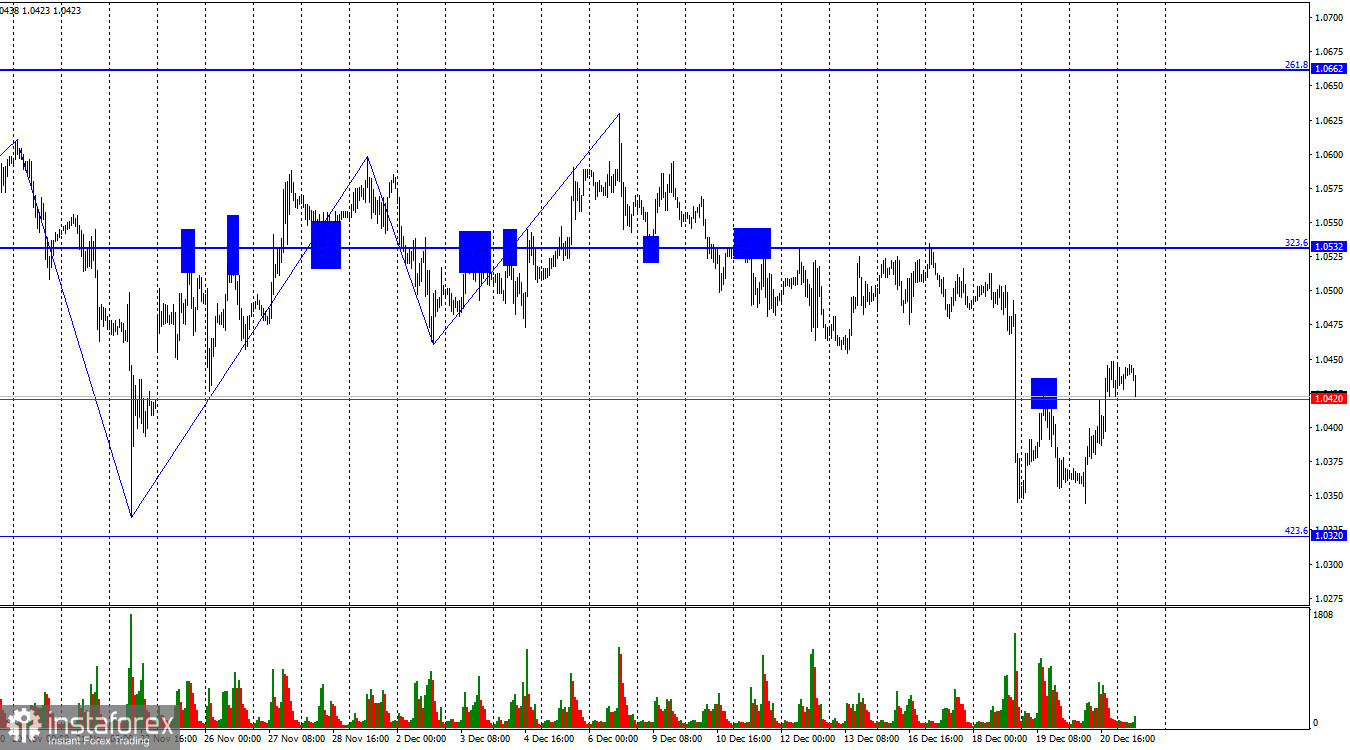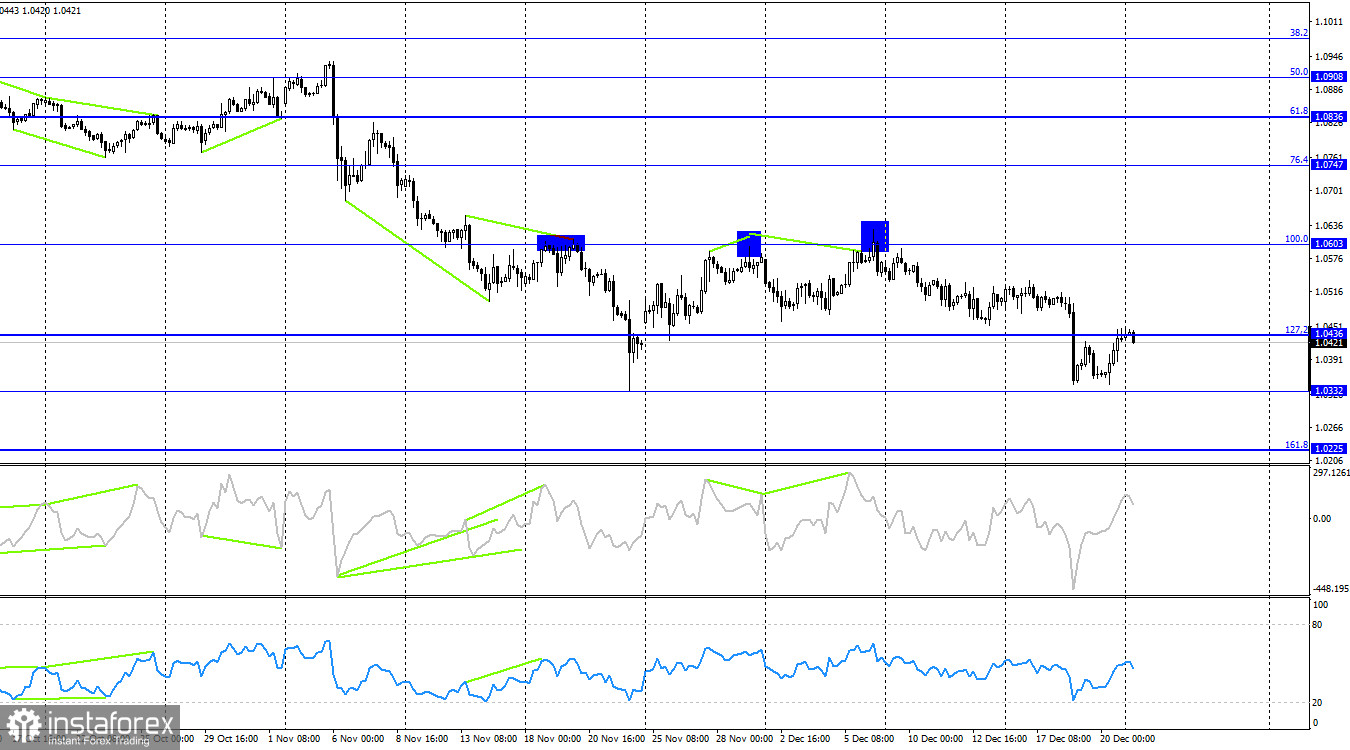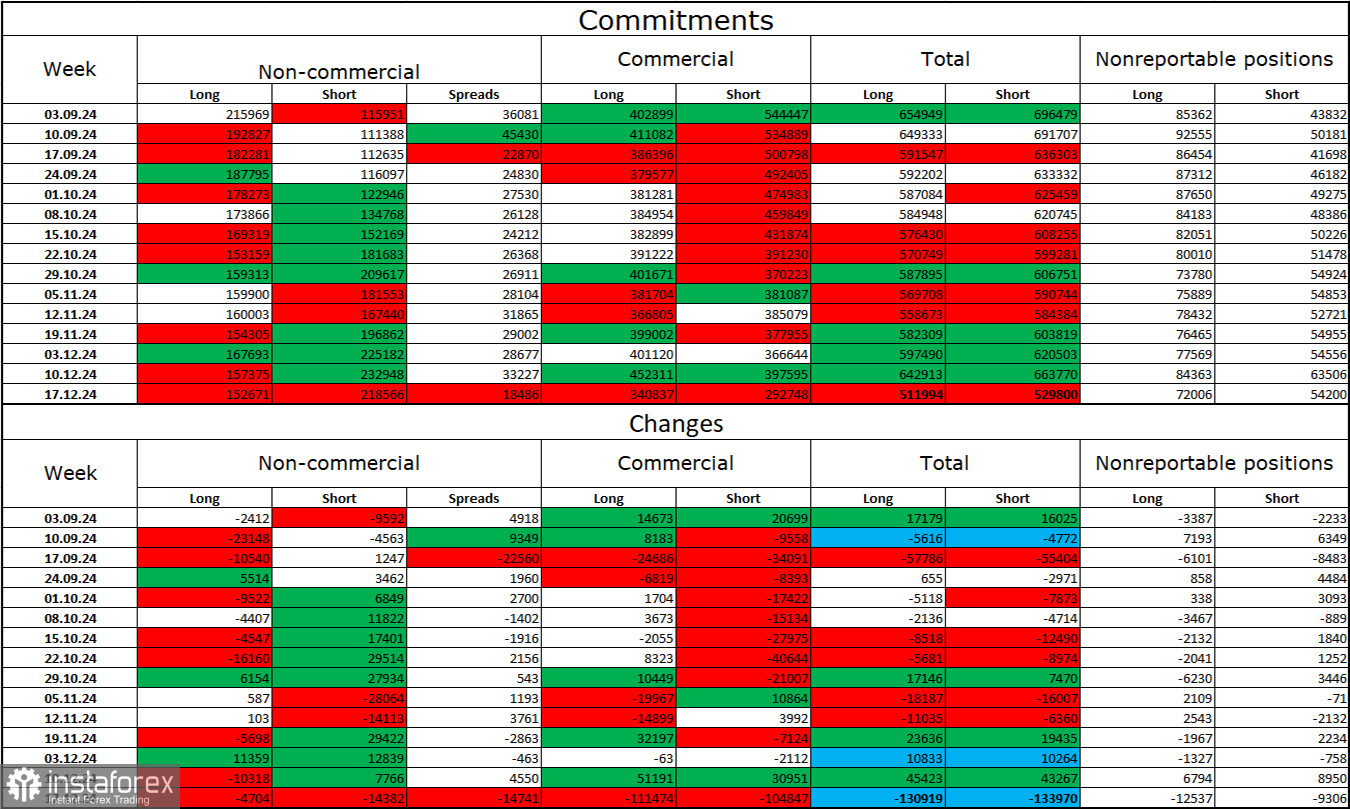On Friday, the EUR/USD pair reversed in favor of the European currency, rising approximately 100 points and consolidating above the 1.0420 level. However, on Monday, bears launched a new attack, aiming to consolidate below 1.0420. If they succeed, the decline is likely to resume toward the 423.6% corrective level at 1.0320.

The wave situation is straightforward. The last completed upward wave barely broke the previous peak, while the last downward wave easily broke the previous low. Thus, the formation of the bullish trend can currently be considered complete. As I expected, it turned out to be very weak. Now, a decline in the euro within the framework of a new trend is anticipated.
On Friday, the fundamental backdrop was not significant for either the euro or the dollar. I was somewhat surprised to see a relatively strong rise in the pair. The PCE price index came in at 2.8%, unchanged from the previous month. The University of Michigan Consumer Sentiment Index reached 74 points, matching market expectations. Thus, the economic data from the U.S. could not be seen as supportive for either bears or bulls. The reports were not critical, and their values either met market expectations or were unchanged from the previous month. Therefore, I believe bulls attacked without much reason but not without success. As a result, the euro could face another decline today. The trend has shifted to bearish, and during a bearish trend, one should expect declines, not rises.
The holiday week has started, which doesn't bode well. A "thin market" means there will be significantly fewer traders than usual, and their activity will also be reduced. However, this also means that much smaller trading volumes will be sufficient to trigger sharp price movements. In my view, significant price changes are possible this week, except on the actual holidays.

On the 4-hour chart, the pair has rebounded twice from the 100.0% retracement level at 1.0603 and continues to decline toward the 161.8% Fibonacci level at 1.0225. Today, a rebound from 1.0436 would increase the likelihood of further declines. Consolidation above 1.0436, however, could signal a recovery toward 1.0603. No new divergences are observed on any indicators today.
Commitments of Traders (COT) Report

During the last reporting week, speculators closed 4,704 long positions and 14,382 short positions. The sentiment of the "Non-commercial" group remains bearish and is strengthening, indicating further potential declines in the pair. The total number of long positions held by speculators is now 152,000, while short positions total 218,000.
For fourteen consecutive weeks, major players have been reducing their holdings of the euro. This suggests a strong bearish trend. Occasionally, bulls dominate in specific weeks, but this is more of an exception than the rule. The key factor driving the dollar's decline—expectations of monetary policy easing by the FOMC—has already been priced in. There are currently no new reasons for the market to abandon the dollar. While such reasons could emerge in the future, the dollar's growth remains more likely for now. Graphical analysis also points to the continuation of a long-term bearish trend. As such, I anticipate a prolonged decline in the EUR/USD pair.
News Calendar for the U.S. and Eurozone
- December 23: The economic calendar contains no significant entries. The news background will have no impact on market sentiment today.
Forecast and Recommendations for EUR/USD Traders
- Sales: The pair could be sold after a rebound on the 4-hour chart from 1.0603, targeting 1.0420 and 1.0320. The first target has been achieved, and the second is nearly reached. Today, selling is possible after a rebound on the 4-hour chart from 1.0620.
- Purchases: I do not recommend considering purchases today.
Fibonacci retracement levels are based on 1.1003–1.1214 on the hourly chart and 1.0603–1.1214 on the 4-hour chart.





















